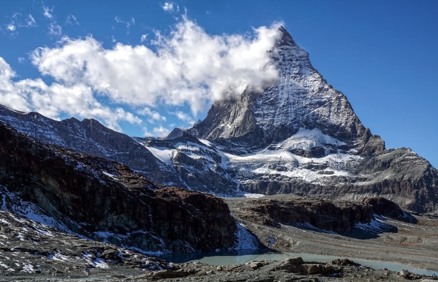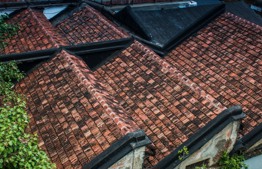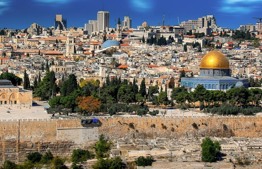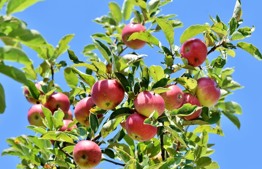Parashat Devarim: Mt. Hermon – The Mountain of Many Names

Why does Mt. Hermon have so many names? What does each name mean? About Israel's tallest mountain, mentioned in parashat Devarim.
The Land of Israel is truly wondrous; a conglomeration of extremely varies topography, flora and fauna, in a relatively compact area. One salient example, mentioned in our parasha by many names, is Mt. Hermon: "The Tsidonites would call the Hermon Siryon, while the Emorites would call it Senir" (Devarim 3:9).
Today, the Hermon mountain range is in Syrian, Lebanese, and Israeli territory. Its highest elevation in Israeli controlled territory and Israel's tallest mountain, is 7,335 ft high (civilians can climb to the 6,692 ft mark). The Israeli Mt. Hermon is covered in snow during the winter months. Its summit, currently in Syrian control, reaches 9,232 ft above sea level.
It is perhaps for this reason that Targum Unkulus renders Senir as תור תלגא that is, "mountain of snow." Rashi, based on Hullin 60b, informs us of the mountain's four names: Hermon, Siryon, Senir, and Si'on. Why were all these names recorded? To publicize the praise of the Land of Israel, as four kingdoms took pride in it. That is, each would give it a name. Ramban adds that the Tsidonites (Tsidon being Canaan's firstborn, Bereishit 10:15) called Hermon Siryon, while the Emorites who captured it from them named it Senir. He explains: "It is possible that after the Israelites came to the Land of Israel, the names were somewhat changed, and since the mountain was huge, the steep part with the summit was called Senir, and the other part was called Hermon. Alternatively, these were different mountains in the same mountain range."
Yalkut Me'am Loez states: " 'Hermon' is similar to the word hurban, ruin; due to its fierce cold, it is impossible to live there and it is desolate." Similarly, the Ramban writes that the name Hermon is from the word herem; apparently because people do not live on the mountain and it is very difficult to scale due it its height and extreme weather.
It is possible that the name Hermon is also related to the Arabic term haram, meaning "consecrated." Indeed, the ancient (non-Jewish) peoples that inhabited the area erected temples on the mountain, including one at its highest peak (today in Syrian territory).
Some say that it was called Hermon since it was a "city full of goodness like a pomegranate (rimon)." In Arabic, the mountain is also known as Jabal al-Telej, "mountain of snow" (jabal=mountain; telej= sheleg, similar to Aramaic, tav and shin interchange and jimel is gimel with a dagesh) and Jabal al-Shaykh, "mountain of the (old) sheikh" due to its white crown, which resembles a sheikh donning a keffiyeh or because the snow resembles the hoary hair of an old sheikh. The source of the name "Si'on" is its great height (שיא in Hebrew also means "great height"), while "Siryon," its Tsidonite name, is related to the mountain protecting the nation (linguistically similar to shiryon, armor; Ramban). The source of "Senir" is "snow" in Canaanite; Rashi notes that it is also the ancient German term for snow. The author of the Siftei Chachamim (Rabbi Shabtai Bass, 17 –18th century) notes that Senir (שניר) and Siryon (שריון) are essentially the same letters in a different order.
During the days of Yehoshua, the Hermon area was inhabited by Hivites: " … and to the Hivites at the foot of Hermon, in the land of Mizpah" (Yehoshua 11:3). The region was apportioned to the tribe of Menashe, "The members of the half-tribe of Menashe dwelt in the land; they were very numerous from Bashan to Baal-Hermon, Senir, and Mount Hermon" (I Divrei Hayamim 5:23).
In Shir HaShirim, Mt. Hermon is called Amana (4:8): "From Lebanon come with me; from Lebanon, my bride, with me! Trip down from Amana's peak, from the peak of Senir and Hermon, from the dens of lions, from the hills of leopards." Here Rashi explains that on their journey back to the Land of Israel, Jews returning from exiles will come together on Mt. Hermon. When they reach this mountain they will behold the country and inhale the air of the Land of Israel. There, they will be full of joy and words of gratitude. For this reason, the verse states: תשורי מראש אמנה (tashuri is linguistically similar to tashiri, "you will sing").
Mt. Hermon is composed to layers of limestone and dolomite, and faults and solution channels break it up into several summits. Its runoff of melted snow provides a steady water supply all year round to Jordan and its surroundings. The mountain receives approximately 4,900 ft2 of precipitation annually. Mt. Hermon is also rich with dew, which also contributes significantly to the fertility of the region. The dew of Mt. Hermon is also a symbol of vitality: "Like the dew of Hermon that falls upon the mountains of Zion; there the L-rd ordained blessing, everlasting life" (Tehillim 133:3).
The Arabs say about Mt. Hermon:
At its feet – eternal summer
At its slopes – spring blooms
At its shoulders – chilly autumn
At its summits – eternal winter
At its feet – tropic plants
At its head – alpine plants
During the Six Day War, the IDF conquered the eastern range (Katef [shoulder of] Hermon), which comprised approximately 7% of the Hermon mountain range. On October 6th, 1974, the first day of the Yom Kippur War, the Syrians took over Katef Hermon. Two weeks later, the IDF embarked on Operation Kinuach (Dessert), and the Golani brigade reconquered the post Israeli paratroopers also took over an abandoned Syrian post, and the Israeli flag flew in the area once again. In May 1974, the Disengagement Agreement was signed and Israel relinquished Mt Hermon's summit, along with most of Mt. Hermon, to the Syrians. Today the area is under UN supervision.
Following the Yom Kippur War, Mt. Hermon received yet another name: "the eyes of the nation," since its elevation makes the mountain Israel's strategic early warning system. Indeed, today there are several military posts on the mountain.
Today, Mt. Hermon serves as Israel's only ski resort, while during the summer it features exquisite nature trails.




